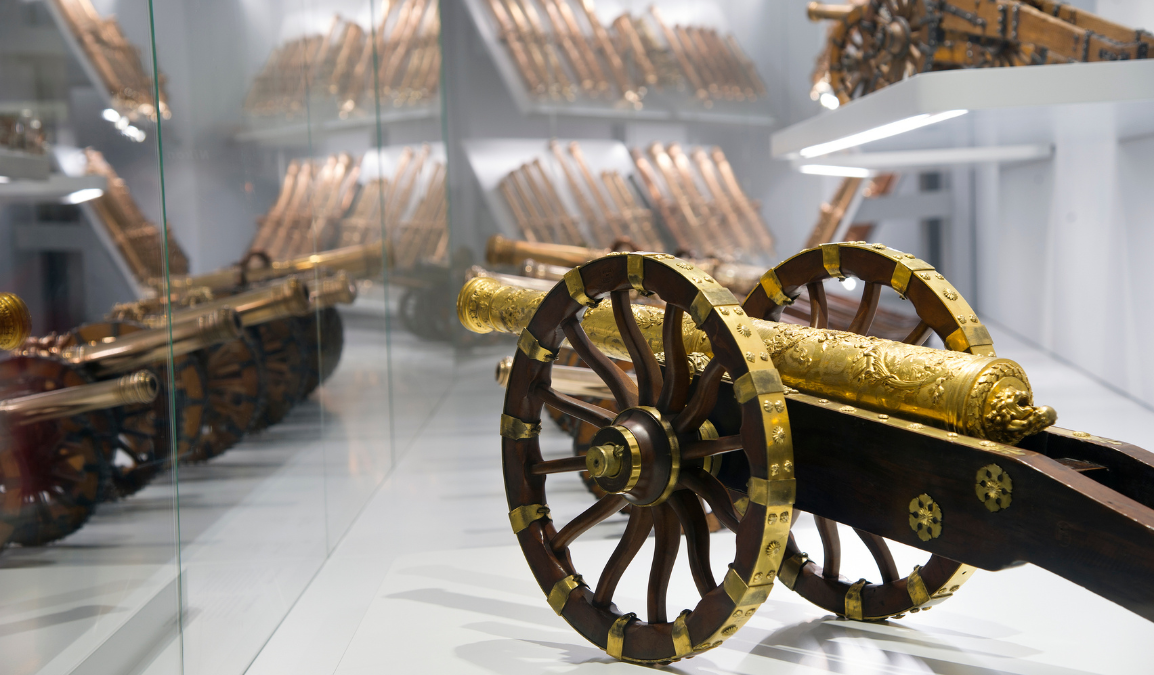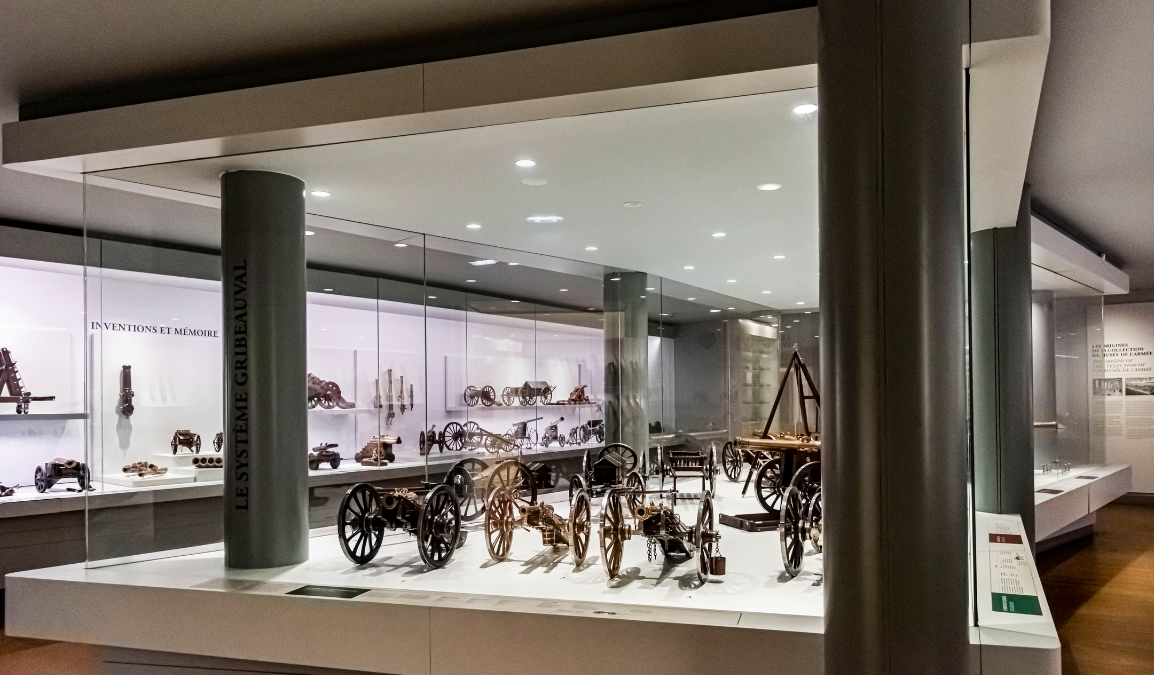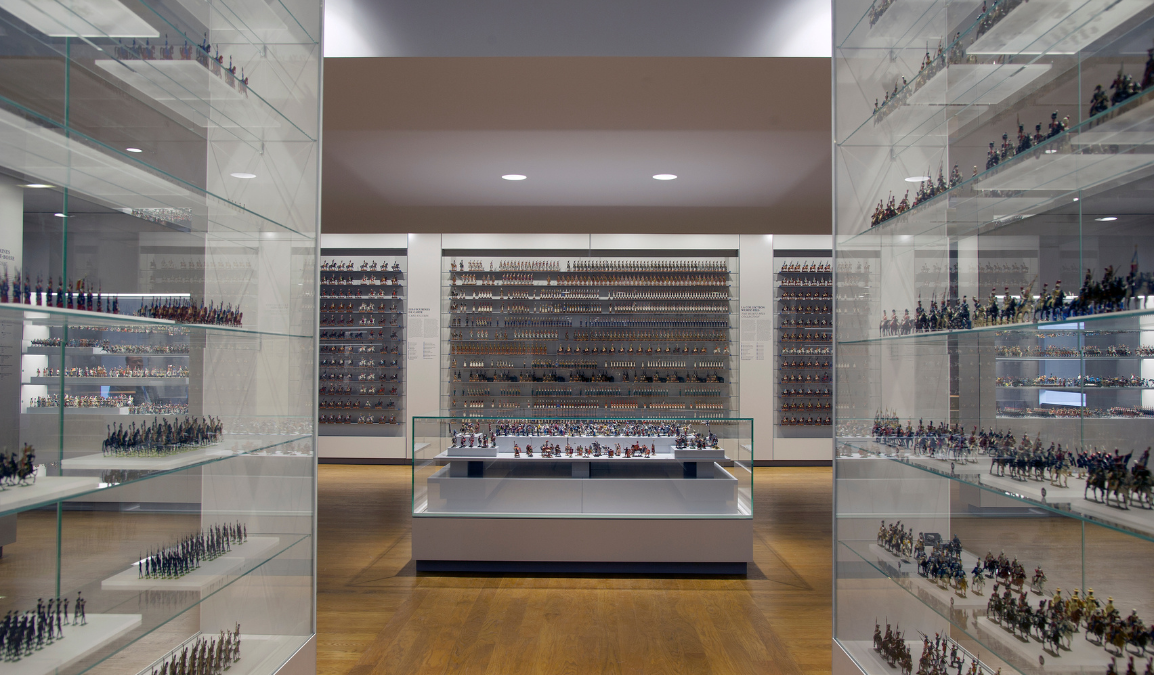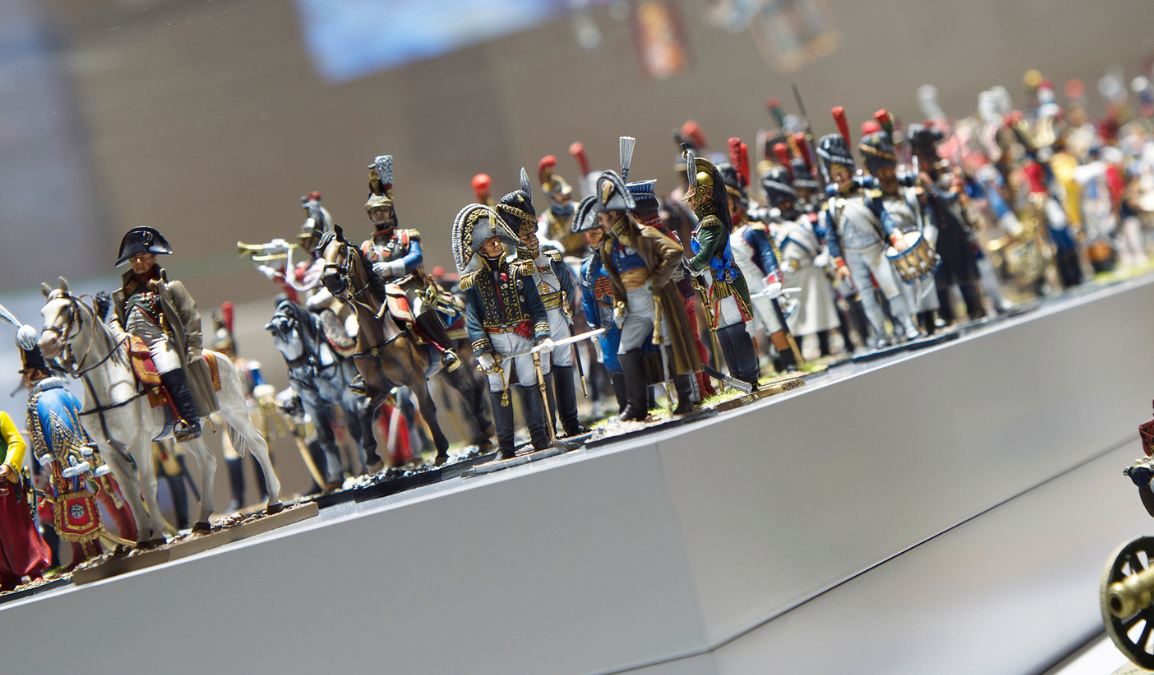
Extra ordinary cabinets
See unexpected items, rarely on display and often unknown, exemplifying the diversity and richness of the Museum's collections.





This new space is divided into two rooms. The first room showcases specific collections of ancient figurines (sets of paper, lead and tin toy soldiers), as well as scale models of artillery pieces, whilst the second room is dedicated to the history of ancient musical instruments.
Room of artillery models and figurines
Historical figurines
The 5000 or so pieces, representing all the different types of historical figurines, reflect the diversity of the Army Museum’s collection, which is made up of around 140,000 pieces in total.
This room features displays of the four main types of figurines, which are mostly arranged in parade formations. First, we have the card figurines which were made by and for adults using stiff cardboard from the beginning of the 18th century. Then there are the so-called “tinplate” figurines which were produced during the second half of the 19th century. These are followed by the lead figurines, which were originally produced as children’s toys and still to this day represent the images of “toy soldiers” found in our collective imagination. Finally, we have the plastic soldiers, which became immensely popular during the 20th century due to the fact that they were stronger and less expensive.
Artillery models
The one thousand piece collection of scale artillery models is one of the largest in the world. The exhibition starts with royal and princely pieces and continues with models bearing private coats of arms which, for the most part, were given as honorific gifts. It also features models of weaponry designs that were never actually adopted but were developed with a view to improving the specific technical elements of artillery pieces. What’s more, some of the models are all that remain of artillery pieces that have otherwise disappeared.
Finally, visitors are given an overview of French artillery in the 18th and 19th centuries by way of incredibly accurate scale models. An entire display cabinet is dedicated to the Gribeauval system, named after its inventor, which was the first artillery system adopted by the French army and contributed greatly to the victories of the Revolution and Empire.
Musical instrument room
This second room presents a rich collection of military musical instruments that are particularly emblematic and indicative of the instrumental collections of the Army Museum. The majority of them are wind and percussion instruments (aerophone and membranophone) that were designed to be used in military marching bands.
The exhibits trace the evolution of military bands from the Revolution to the Second Empire in a two-pronged approach that is both musical and historical. This collection also comprises shimmering uniforms and paintings which help to contextualise the instruments’ use.
The exhibition also recounts the major reforms affecting military bands, including the Sax system (invented by the Belgian maker Adolphe Sax) which was introduced to military bands in 1845 as a replacement for the serpent and the ophicleide. It was finally adopted in 1853.
This section, which is devoted to military bands, was created in collaboration with the Music Museum (Paris Philharmonic), which was involved in the scientific design and agreed to loan 30 instruments from its collections.
The spaces were created with the help of the French bank CIC, a major partner of the Army Museum.